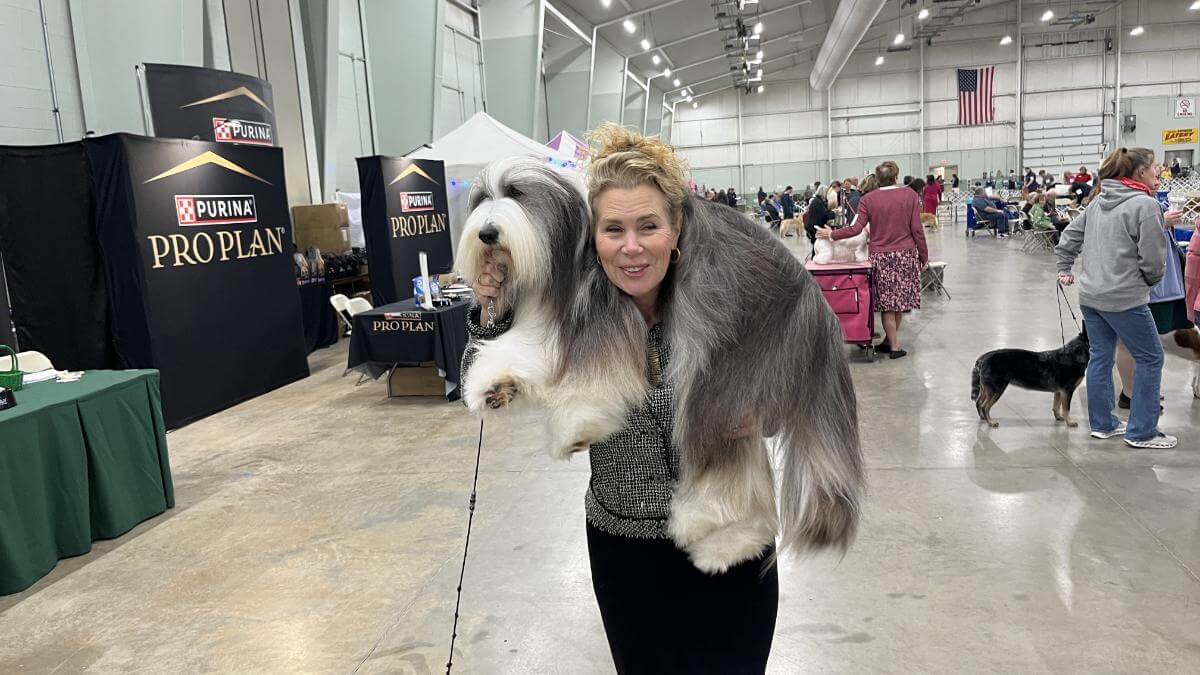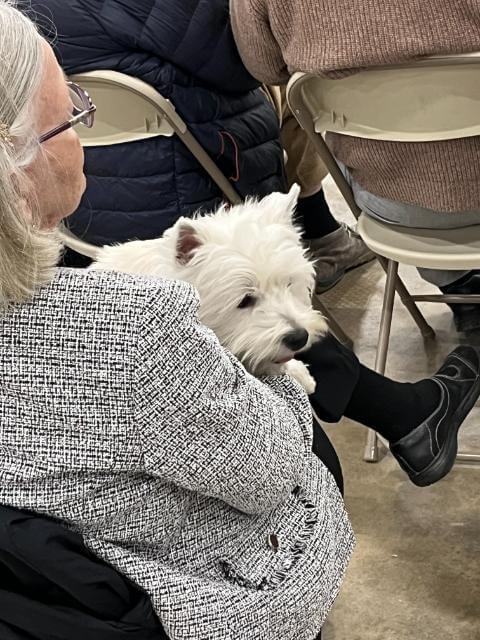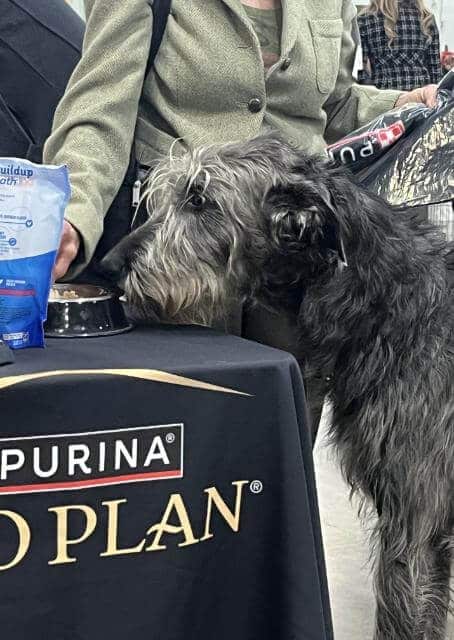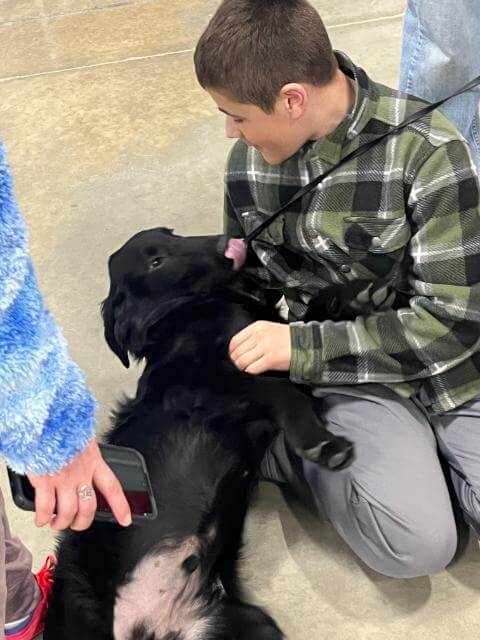
Home » Low Entry and Miscellaneous Breeds (a Few Suggestions) and a Celtic Gem in Pennsylvania

In the latest AKC publication of breeds classified as “Low Entry,” over 100 breeds are listed. This number means that of all recognized AKC breeds, over one-half of all of our breeds are now classified as low-entry breeds.
For a breed to fall into this category, it means that across all AKC Conformation events in one calendar year, the breed had less than 3,500 total entries. That is total entries, so while there may have been occasions when there were significant entries, the average per AKC show was less than three exhibits. A deeper look would show that many of these breeds are not represented at most AKC shows.

I understand that overall registrations are declining, but is adding new breeds the best solution for resolving this issue?
At one time in our history, owning a purebred, AKC registered dog was a big deal. It ranked up there with home ownership and a new car. It was a part of the family’s American Dream. Over time, it seems that people “rescuing” all-American dogs from shelters or owning a cross-bred designer dog or a doodle became all the craze. What can we and the AKC do to change that narrative and restore our purebred dogs to the position they truly deserve?
We must find a way to promote our breeds. We need to educate the public on the value of our dogs by pointing out that great breeders produce healthy, temperamentally sound dogs that were bred to maintain centuries of genetic traditions and purpose. I understand that societal changes have occurred throughout history and that the world must adapt, but at what cost?
The main Mission Statement of the AKC is the promotion and maintenance of PUREBRED dogs. Have they lost that focus on our primary mission? Some people may have thought that allowing “All-American” dogs to compete at various types of Companion and Performance events was a good idea, but at what cost to our mission statement? Adjustments need to be made to the policy if we are ever going to achieve it.
Getting a new exhibitor interested in AKC events is a good thing, but the ultimate goal should be for that exhibitor to eventually become part of the purebred family. It may be time to take the next step by letting these people know they are welcome to our events, but after titling one or two dogs, they must acquire an AKC purebred to continue to compete in AKC events. It’s not much different than after finishing Obedience titles in Novice A you must continue to compete in Novice B or the next level.
Also, by acquiring a purebred, these same individuals may cross over and start to show on the Conformation side of our sport. We know it happens; look at all of the titles attached to the names of many of our AKC dogs that appear in the catalogs.
It would not hurt us if the AKC started a PSA campaign to promote our dogs’ purebred aspect and the breeders’ dedication to those breeds. We need to get our message out and stop letting AR groups overshadow us with all of their advertising and messaging they do at the media levels.

For years we have seen new breeds come into our AKC family and progress through the Miscellaneous program towards full recognition, eventually being added to one of the current seven Groups for further competition and the ability to earn Championship points.
Does the current system work? Every so often, the subject of Group size comes up in discussion. Part of the problem is that once a breed is advanced into a Group, that breed may never come off the low-entry list.
How about a better plan?
One of the main complaints for those who exhibit in the Miscellaneous Class is that they do not earn anything other than some show experience and a few ribbons. What if we changed the system and added an incentive to compete?
Why not allow these “newer” breeds to earn an AKC Championship while in the Miscellaneous Class? Use the same point scale used for low-entry breeds, thus incentivizing the breeders and owners of these new breeds to start competing and be welcomed in as more than stepchildren. Their entries would rise, and judges would also see more exhibits of the new breeds.
I would also change the timeline for being admitted into a regular Group by changing how it is done. A Miscellaneous breed would remain in the Miscellaneous Class until its numbers are above the minimum to be recognized as a low-entry breed. After all, there is already a Best in Miscellaneous; change it to four placements like a regular Group, but do not make it eligible for Best in Show.
Just look at some of the current breeds that we never see at most shows. By changing this system, some breeds will flourish while others can still become Champions while trying to achieve the numbers to advance into the regular Groups.
Also, if this change were to take place, require the judges to take and pass the tests to adjudicate the breeds in the Miscellaneous Class. I would “grandfather” all breeds currently assigned regular Group status, but use the new rules for all new breeds coming in.
Change is part of life, and sometimes, we need to make changes that will benefit our sport in the long term. I think this would provide a real incentive for the newer breeds to participate.

For many years, the Kentuckiana cluster, held in Louisville, Kentucky, has hosted some of the largest shows in North America.
The five-day Celtic Cluster, held in York, Pennsylvania, and hosted by the York, Lancaster, and Delaware County Kennel Clubs, is held on the same weekend and is only about a 10-hour drive to the northeast.
This cluster also has a very large entry of 2,000 dogs, with Specialties for Italian Greyhounds, German Shorthaired Pointers, English Springer Spaniels, Afghan Hounds, Great Danes, Shetland Sheepdogs, English Setters, Vizslas, Dachshunds, Salukis, Whippets, Boxers, Samoyeds, and Keeshonden, along with numerous Supported Entries.
The cluster is held at the wonderful York County Fairgrounds. The large and spacious fairgrounds have plenty of parking, RV hookups, and the amenities needed for a large, successful cluster. While most Breed judging is done in the main building, the cluster has provided two additional buildings so that the Specialties can have very large rings and plenty of room for their grooming needs.
All of the buildings are very well-lit, clean, and well-maintained. They have very large rings to accommodate the large entries. Even in the main building, the rings are large and well-spaced. The clubs work together to provide an excellent environment for all the exhibitors.
I had the privilege to judge three of the five days and the opportunity to judge several Specialties and Supported Entries. I truly enjoyed the high quality of the dogs and the excellent sportsmanship of many exhibitors. There were dogs from all over the country and numerous professional handlers from as far away as the Pacific Northwest, California, the Southeastern United States, and Canada, along with many from the Eastern and Southeastern United States.
On Sunday, I had the task of selecting Owner-Handled Best in Show, and I must say the line-up was as good as any regular Best in Show line-up I have seen.
The Groups were strong, and many breeds had major entries. The clubs also provided a free ice cream social during the Groups on Friday and Saturday. The line was long; I understand that over 400 people were served each day.

Mr. Tom Nuss, Carol Dotts, and Deborah Eckert served as Show Chairs for the cluster. They had a great group of assistants who ensured the judges were taken care of and made it to all of the rings on time to facilitate the Specialties in the other buildings. This was a great example of clubs working together to provide an excellent experience for the dogs, judges, and exhibitors.
Spring is in the air, and warm weather is hopefully not far behind. Please be sure to take care of your animals and keep them safe and comfortable in the heat. Remember, it does not take long for one to overheat, so be vigilant and avoid the possibility of heat stroke.
